Centerpin VS Fly Reel, Vs Other River Fishing Reels
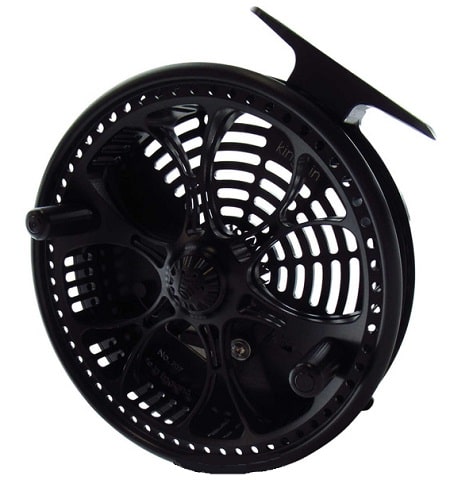
As a guide, I use centerpin reels, fly reels, spinning reels, and even baitcasting reels. In this article, I will discuss the difference between the Centerpin vs fly reel, and the Centerpin reel versus the other popular reels used for trout, steelhead, and salmon.
The difference between a Centerpin reel and a fly reel is how they function and cast. A fly reel has a drag, whereas a centerpin does not. You can cast a centerpin reel, but you can not cast a fly reel. A centerpin reel aids in the fishing presentation, but a fly reel does not.
What Is A Centerpin Reel?
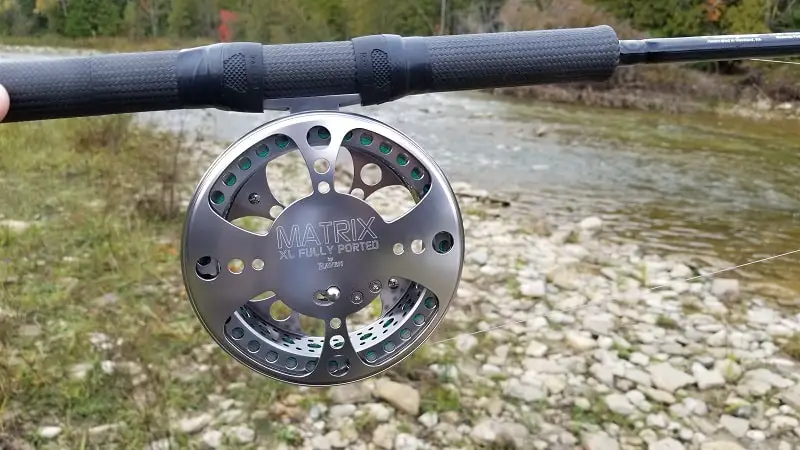
A Centerpin reel resembles a wide-diameter fly reel, except that it does not have a drag or any gears, or a clicker that can create friction. This enables the spool to rotate effortlessly on its central axis both forwards and backwards. While a centerpin reel comes with a clicker, the click is only used during transport and storage.
The Centerpin reel, which is often called a float reel, is meant for a method called “float fishing” or “centerpinning,” which is a method predominantly used for freshwater fishing in rivers for species like steelhead, salmon, and trout. The primary objective of this type of fishing is to achieve a very natural and drag-free drift of the bait.
A few additional points about centerpin reels and fishing:
- Free-Spinning Advantage: One of the primary advantages of a centerpin reel is its ability to free-spool. This allows the angler to cast a float and bait out and let the current take it downstream with minimal resistance. The current will pull the float, which then pulls the line, which then provides a very natural presentation that will outperform other types of reels in terms of bites.
- Line Control: Mastering the art of controlling the line as it leaves the reel with finger pressure on the rim of the spool is crucial. Since there’s no mechanical drag, the angler must use their fingers to add resistance to slow down the spool’s rotation, which slows the line coming out, which slows the float, and that slows the bait, which is great.
- Casting: The traditional casting method is very unusual compared to other reels. There are a few ways to cast a centerpin reel, the side cast, the spinning side cast, and the “Wallis cast.”
- Learning Curve: There’s a notable learning curve when first starting with centerpin fishing. However, I have taught hundreds of anglers within a few hours how to cast and properly fish and even fight big fish on the centerpin reel. Controlling the spin of the reel during a cast and maintaining a drag-free drift requires practice.
- Drag-Free Drift: Based on my experience, the ability to achieve a perfect drag-free drift can significantly affect success rates.
- Fighting Fish: Without a traditional drag system, fighting a fish on a centerpin reel is a hands-on experience, a challenge, and a lot of fun. Anglers must use their hands to apply pressure and control the fish.
- Reel Maintenance: Due to their simplicity, centerpin reels typically require less maintenance than other reel types. However, they still need periodic cleaning to keep them spinning freely. Other than occasionally wiping out sand and grit, my centerpin reels will run smoothly for years with no maintenance.
If you are in the market for a centerpin reel, be sure to check out my reviews and recommendations for over twenty centerpin reels.
What Is A Fly Reel?
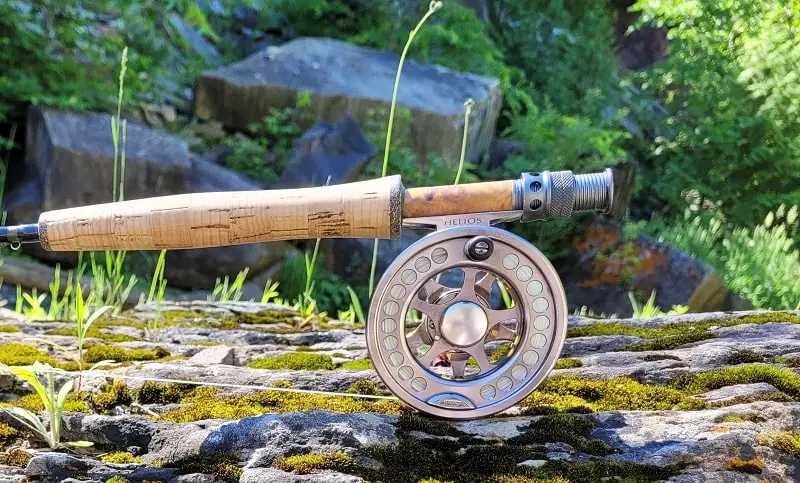
A fly reel is among the most straightforward fishing reels available. It is a spool on a center axis post, with a gear and a drag. A little handle on one side allows you to wind the backing and fly line onto the spool.
The fly reel is made for fly fishing methods, and is not meant to fish with baits or lures.
Unlike other reels, you need to manually pull the fly line out in order to cast. Casting is all done by the fly rod, which is often why you will hear anglers say the reel is nothing but a line holder.
In some cases, the fly reel will have a clicker and not a drag. Either way, the fly reel does not free spool.
Centerpin VS Fly Reel

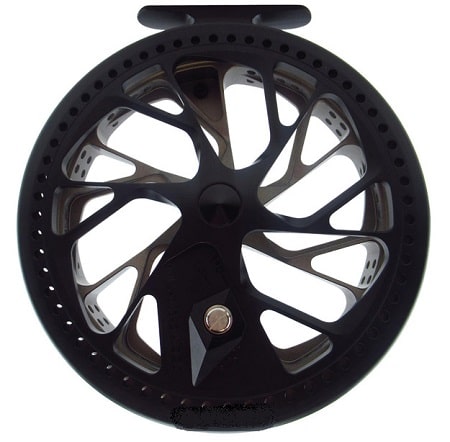
Looks: Fly reels and Centerpin reels look very similar. However, the Centerpin reel is usually much larger in Diameter. Looks can be deceiving, as they are nothing alike except the look.
Size: Centerpin reels are much larger in diameter, with most being over 4.5″ in diameter, while most fly reels are smaller, being under 3.5″ in diameter. Fly reels also use a weight rating system to match the reel and line, and rod so they are balanced and cast properly.
Centerpin reels can go from a small 4″ diameter, rare, to over 5.5″ diameter. The most common sizes are 4.5 to 5.25″ in diameter, and the size is more based on preferences than performance.
Drag: A Centerpin reel does not have a drag, but a fly reel has a drag. In some fly reel models, it will have a clicker instead of a drag. These clicker fly reels are known as click and pawl reels. In some models, a centerpin reel will have a built-in drag system.
Clicker: Both fly reels and centerpin reels have a clicker, which only makes a clicking noise and creates very light resistance on the reel. In fly reels, the clicker is meant to make noise and cannot be turned off. The clicker on a Centerpin reel is turned on or off by a button or knob.
The clicker is only used for transporting the reel and for storage. It is turned off when fishing and fighting fish.
Function: The largest difference between a Centerpin vs a fly reel is how it functions.
The fly reel more or less just holds the fly line. You can fish for hours without reeling in once. This is because once you pull the desired amount of fly line off the reel, the rod can cast the fly line all day. You only reel the line in when you are leaving, moving to another spot, taking up unneeded line length, or fighting a fish.
The Centerpin reel, on the other hand, is used constantly and aids in the presentation of the drift, the fight, and the cast. With a Centerpin reel, you cast it out, drift short or sometimes long distances over 100 feet, and then reel it in a repeat.
The centerpin reel itself will spin freely, allowing the line to pull off the reel in a slow and controlled manner.
Which Is Better For Catching Fish? Centerpin VS Fly Reel
The Centerpin reel is exclusively used for float fishing, and when it comes to this method, the Centerpin reel is better than a fly reel. The reason it is better is because of the long, smooth, controlled presentation you get with the Centerpin reel.
The fly reel is much better for methods such as fishing dry flies on the surface, streamer fishing, or shallow water nymphing.
Can You Use A Spinning Reel As A Float Reel?
You can not use a spinning reel as a float reel because the line does not come off the reel without pulling it by hand. The fly reel is incapable of free spooling, which is required to float fish properly.
Centerpin Reel Vs Spinning Reel
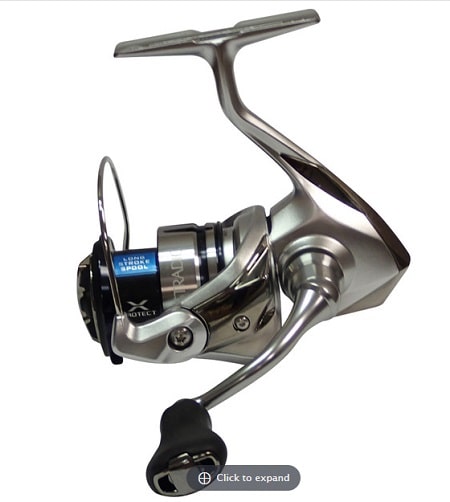
Now, let’s discuss the difference between a Centerpin Vs Spinning reels and which one is superior and why.
The centerpin reel is a better reel for float fishing because the line comes out effortlessly, and it has the ability to smoothly control the speed of the float and the bait. The spinning reel is better for casting lures. The spinning reel is also more user-friendly for beginners.
What Is A Spinning Reel?
A spinning reel is an open-faced fishing reel with a small line spool in the front for easy casting and line management. The spinning reel also has an adjustable drag system for fighting fish. The spinning reel has a large, user-friendly handle for reeling in line quickly.
Centerpin VS Spinning Reel
Looks: The spinning reel has a unique look, unlike the rounded shape of the Centerpin reel.
Size: The spinning reel comes in multiple sizes suitable for trout, steelhead, and salmon. Unlike a Centerpin reel that is pretty much one size for all species, with the spinning reel, you buy the reel size that best suits the species, and the required line amount that will fit on the reel.
Drag: The spinning reel has a built-in drag system, often consisting of a disc and pad, also known as a disc drag. The Centerpin does not have a drag.
Function: The function and primary purpose of the spinning reel and the centerpin reel are very different. Spinning reels are made to cast and retrieve, and repeat. A centerpin reel is meant to cast, free spool, and retrieve. The free spool is 90% of the function of a centerpin, whereas the retrieve is 90% of the function of a spinning reel.
The spinning reel can also drift, but the line does not come off the reel as effortlessly and is difficult to control the speed smoothly.
Which Is Better For Catching Fish? Centerpin VS Spinning Reel
For float fishing, the Centerpin reel is much better at getting long smooth, controlled drifts, which means you get a superior bait presentation, which leads to more fish. So for float fishing, the Centerpin is a better reel.
The spinning reel on the other hand, is very versatile, meaning it can float fish decently, it can also be used for drift fishing without a float, and it can also be used for casting lures. For this reason, the Spinning reel is a better reel.
Can You Use A Spinning Reel As A Float Reel?
A spinning reel can be used as a float reel, and many anglers use spinning reels for float fishing by using their fingers to control the line coming off the reel.
Check out my article on my favorite spinning reels for float fishing.
Centerpin VS Baitcaster Reel
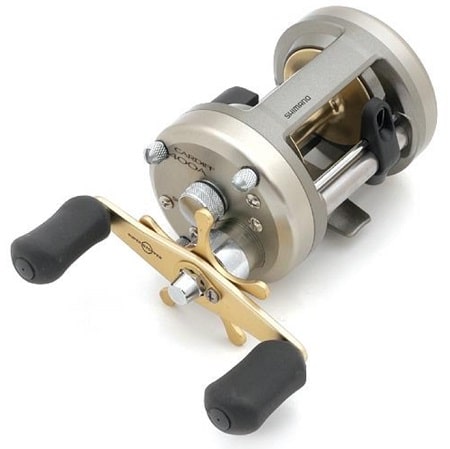
Now, let’s discuss the difference between a Centerpin Vs a Baitcaster reel, which one is superior, and why.
The centerpin reel and the Baitcaster can be used for float fishing, and both allow the current to pull the line off the spool effortlessly, especially in faster water. Both reels have the ability to smoothly control the speed of the float and the bait.
With the centerpin reel, you control the speed of the free spool using a finger on the spool rim. With the baitcaster, you control the free spool of the line coming out by thumbing the spool.
I have seen both recommended for fishing; some swear by one while others prefer the other. Around the Great Lakes steelhead and salmon rivers, you will see 100 Centerpin reels for every one baitcasting reel, which shows the popularity of each.
On west coast steelhead and salmon rivers, you will see both Centerpin and baitcasters being used.
So which one is better?
The baitcaster is a better reel for casting lures and drifting baits without using a float, so it is a better reel for these methods. However, the baitcaster is not very user-friendly for beginners, and casting one can be difficult.
Which Is Better For Catching Fish? Centerpin VS Baitcaster
When it comes to float fishing, the Centerpin reel is better at catching fish when float fishing in all current conditions. Although the baitcaster is good when used in medium to fast currents, it is not as good in very slow to medium-slow currents.
The Centerpin reel excels in slow water, and the ability to control the speed of the spool is a little easier on a centerpin reel. For this reason, the centerpin reel is a better reel for catching fish when float fishing.
However, a baitcaster is more versatile and is better if you want to switch methods and cast lures or drift bait without a float.
Can You Use A Baitcaster As A Float Reel?
A baitcaster can be used as a float reel with the best performance in medium to fast currents and deep flows.
You can get a lot of great baitcasting reels at FishUSA.com.
Which Is Better For Catching Fish? Centerpin VS Mooching Reel
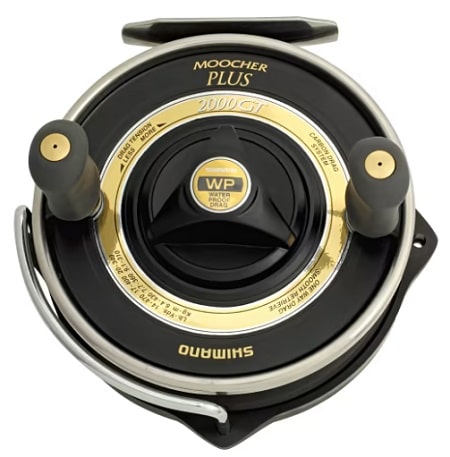
The mooching reel and the Centerpin are similar; however, the mooching reel looks like a beefed-up Centerpin reel, but the centerpin reel is a better reel for catching fish when float fishing.
The mooching reel is designed for trolling, and although it has a free spool function, it is now where as smooth as the bearings on a centerpin reel.
A mooching reel also has a drag system. Both can be palmed to add extra drag. The mooching reel is only good for trolling, and for this, it is better.
Can You Use A Mooching Reel As A Float Reel?
A mooching reel is not a good alternative to a float reel due to its size and inability to let line out smoothly and consistently. It is also not meant to be cast and doesn’t cast like a Centerpin reel. It is a trolling reel, and that is all it should be used for.
You can get Moochiong reels are Bass Pro Shop.
The Centerpin VS Fly Reel, VS Other Reels: My Opinion
When it comes to float fishing, the Centerpin is the superior reel. But other reels are better for specific methods. Which reel is best for you depends on how you want to fish.
If I had to give my opinion about which reel is best or which reel will catch the most steelhead or salmon, I would say that in most rivers, the Centerpin reel is the best reel.
Tight Lines
Graham

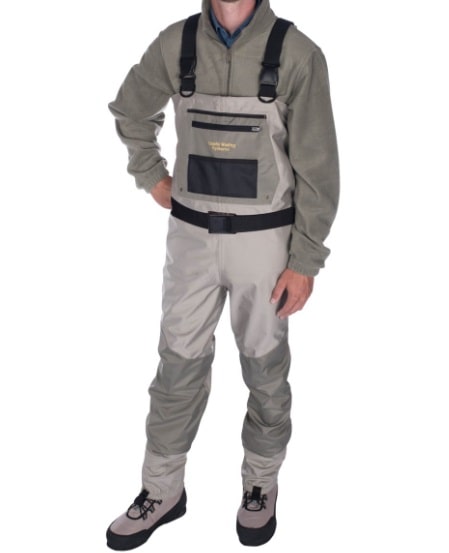
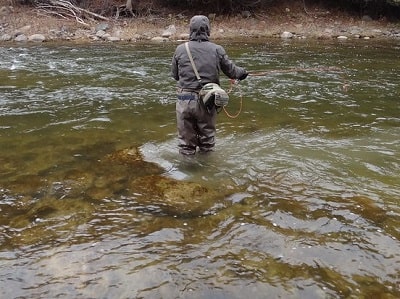

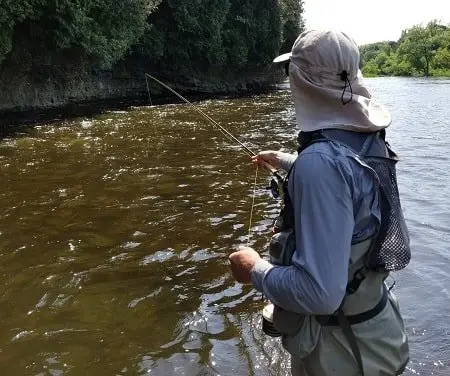
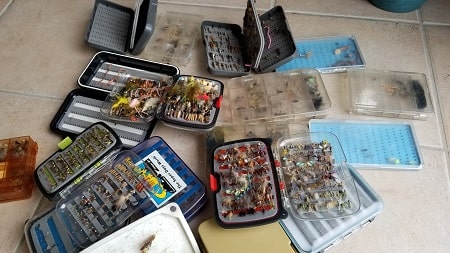

great post, thank you.
I’ve been going through your site, the wealth of information you provide is really appreciated. I’m just getting into float fishing and your site is one of the most helpful resources out there.
Thanks again,
Thomas